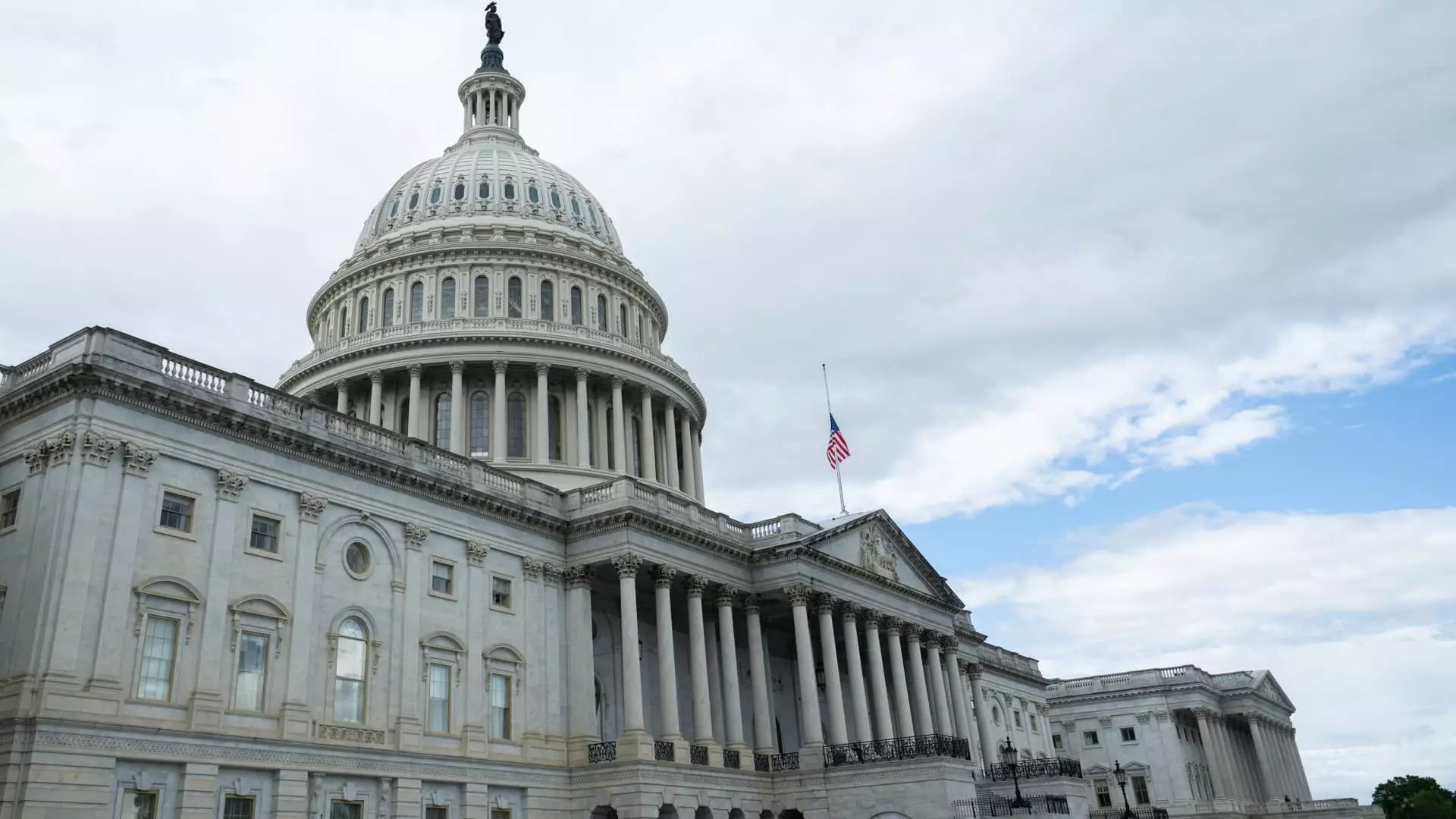Recent legislation passed by House Republicans has ignited a firestorm of financial and political debate, primarily due to its astronomical projected impact on the country’s debt. Touted as a significant tax reform aimed to stimulate the economy, the bill could very well turn out to be a monumental miscalculation that may jeopardize the financial future of American households. With estimates from the Committee for a Responsible Federal Budget projecting an addition of approximately $3.1 trillion to the national debt over the next decade, the repercussions of this bill could steer us into economic turmoil, compelling hesitant Senate members to tread cautiously.
Debt and Deficits: A Recipe for Disaster
In an era where fiscal responsibility should be a priority, it’s disheartening to witness irresponsible governance that disregards the critical reality of increasing national debt. The Republican tax bill is a quintessential example of this troubling trend. By slashing taxes predominantly for wealthy households while simultaneously gutting safety-net programs, this legislative proposal embodies a reckless disregard for equitable wealth distribution. Contrary to popular belief, this isn’t merely an abstract economic issue; it threatens the financial stability of ordinary Americans whose budgets directly depend on predictable interest rates for common loans.
House Republicans argue that the bill would stimulate growth, but this overlooks a fundamental economic principle: higher public debt leads to higher interest rates. Increased borrowing to finance tax cuts invariably leads to greater risk premiums for bond investors, which translates directly into higher costs for consumers. As noted by economists like Mark Zandi, higher interest rates mean increased prices for essential consumer borrowings such as mortgages and car loans. For the average American, this could initiate a perilous cycle of debt and exacerbate the existing financial divides between the affluent and those who are struggling to get by.
The Dangers of Fantasy Math
One of the staunchest critics of this legislation, Rep. Thomas Massie, recognized the bill’s inherent flaws by referencing it as a “debt bomb” that could destroy future fiscal stability. The notion that Congress can manipulate economic calculations to fit a narrative is not just “funny math”—it resembles dangerous fantasy that can mislead public perception. As bond investors grapple with the implications of increased government borrowing, they are likely to react adversely, demanding higher yields in exchange for perceived risks. This could inadvertently result in a financial climate that further evaporates consumer confidence and curtails spending, stretching household budgets thinner.
Even within the Republican Party, a faction is expressing skepticism about the bill’s ramifications on the national debt, with Senators like Rand Paul vocalizing their concerns. Their hesitance signals that even those who typically endorse supply-side economics recognize the precariousness of legislating tax cuts without a responsible economic framework. The opposition isn’t merely rooted in partisan politics; it stems from a genuine concern that this legislation might exacerbate an already precarious financial situation.
How Debt Burden Connects to Daily Life
Understanding the relationship between national debt and everyday financial implications can make the abstract more relatable to the average citizen. Rising U.S. debt correlates with heightened interest rates—a fact that directly impacts mortgages and auto loans. When the yield on the 10-year Treasury bond rises as a result of increased debt-to-GDP ratios, that rise sees its way into household finances. The simple reality is that families may find themselves priced out of homeownership, especially first-time buyers brimming with hopes of securing a stake in the American dream.
The mathematics behind these shifts is startling. Inflation in the real estate market compounded with soaring interest rates can crush the hopes of many aspiring homeowners, thus forcing younger generations into less desirable living situations or rental markets fraught with their own challenges. As Kent Smetters of the Penn Wharton Budget Model indicates, a ballooning debt-to-GDP ratio could lead to an intolerable financial burden over the next decade. For every percentage point increases in this ratio, a tangible spike in interest rates follows, equating to more significant opportunity costs for consumers.
A Call for Responsible Governance
If there is one takeaway from this ongoing financial discourse, it is that responsible governance demands foresight. It must embrace policies that prioritize sustainable growth and equitable wealth distribution rather than a temporary political win. This bill is a clarion call for a reassessment of our economic policies—a push to foster an environment where tax cuts don’t come at the expense of our long-term fiscal health.
The true cost of this “One Big Beautiful Bill Act” isn’t captured in its immediate impacts but rather in the impending financial strain it promises for everyday Americans. The reluctance to confront these bitter truths signals a need for a paradigm shift in how financial legislation is approached. Our leaders must reject the allure of short-term political gains that point to a false prosperity while ignoring the catastrophic fiscal paths laid before us. Thus, it is imperative to advocate for sound, future-oriented policies that ensure economic stability for generations to come.


Leave a Reply